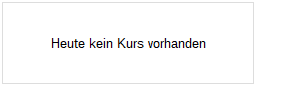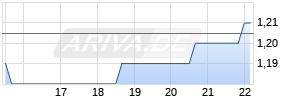
Great Bear Discovers New Gold Zone West of Hinge and Limb Zones: 20.27 g/t Gold Over 1.75 m, Within 5.69 g/t Gold Over 7.05 m; Reports New LP Fault Results Including 16.07 g/t Gold Over 3.70 m Within 3.10 g/t Gold Over 28.30 m
PR Newswire
VANCOUVER, BC, Nov. 24, 2021
TSX-V: GBR
VANCOUVER, BC, Nov. 24, 2021 /PRNewswire/ - Great Bear Resources Ltd. (the "Company" or "Great Bear", (TSXV: GBR) (OTCQX: GTBAF) today reported drill results from its 100% owned flagship Dixie Project, in the Red Lake district of Ontario.
Chris Taylor, President and CEO of Great Bear said, "We recently resumed drilling near the Hinge and Limb zones and discovered a new, high-grade gold zone west of those targets. The new "Midwest" zone closely resembles the style of gold mineralization observed at the Dixie Limb zone; both occur at the sheet-like contacts between different basalt units and consist of silica-sulphide replacement style mineralization including high-grade gold. Several historical holes which tested the Limb zone, did not penetrate far enough to the west to intersect the Midwest zone. In addition to drilling other new, untested basalt contacts, the Company will re-enter and extend previously drilled holes into the Midwest area. Additionally, ongoing drilling of the LP Fault zone continues to return significant gold intervals at depths ranging from bedrock surface to over 600 vertical metres."
New Midwest Zone Drilling Highlights
- Drill hole DL-071 intersected the new "Midwest" zone, located 275 metres northwest of the Hinge zone and 250 metres south of the Dixie Limb zone, assaying 20.27 g/t gold over 1.75 metres from 812.35 to 814.10 metres downhole. The total mineralized interval was 5.69 g/t gold over 7.05 metres from 809.95 to 817.00 metres downhole. Table 1.
- The new discovery consists of high-grade gold in silica-sulphide replacement alteration at the subvertical planar contact between two basalt flows and is most similar to the Dixie Limb zone in style.
- Until this discovery, it was thought that the only mineralized basalt-basalt contact occurred at the Dixie Limb zone. It is now confirmed that additional basalt-basalt contacts can also localize silica-sulphide replacement mineralization including high-grade gold.
- Great Bear's drilling and geophysical data suggest additional basalt-basalt contacts may occur within the mafic volcanic package southwest of the LP Fault zone, defining new drill targets.
All significant gold zones at Dixie occupy a 1.4 kilometre wide "dilation zone" shown on Figure 1, where many geological contacts and structures are mineralized. A report on seismic surveys by Zeng and Calvert, 2006 presents an interpretation that this structural zone reaches the base of the continental crust. At the Dixie project, the zone contains a broad structural corridor with more than 18 kilometres of strike length. Gold has been drilled along 11 kilometres of strike length to date. In addition to ongoing drilling of the LP Fault, Phase 2 drilling will continue to test various new targets such as the new Midwest zone within this broad structurally dilated and mineralized corridor.
New LP Fault Drilling Highlights
Ongoing LP Fault drilling continues to systematically expand gold mineralization, including at depth. Current drill holes targeted the zone at various points along 2.9 kilometres of strike length, between bedrock surface and approximately 600 metres vertical depth. Table 2.
New drilling primarily targeted 1) extensions to the 23 high-grade domains currently being modeled, including at depth, and 2) the lower-grade halo up to 200 metres from the centre of the zone. Gold mineralization is typically strongest within, and proximal to, the high-grade domains that occur towards the centre of the zone. Highlights include:
- Drill holes BR-406 and BR-407 increase the drilled depth of the LP Fault gold zone to approximately 450 metres vertically from surface on their drill section. Results include:
- BR-406: 66.30 g/t gold over 0.50 metres from 407.30 metres to 407.80 metres downhole. This occurred within a broader interval assaying 6.15 g/t gold over 7.20 metres from 406.80 to 414.00 metres downhole.
- BR-406: 42.60 g/t gold over 0.50 metres from 452.15 to 452.65 metres downhole. This also occurred within a broader interval assaying 3.24 g/t gold over 12.25 metres.
- BR-406: The total mineralized interval was 2.03 g/t gold over 45.85 metres from 406.80 to 452.65 metres downhole.
- BR-407: 11.29 g/t gold over 3.00 metres from 496.00 to 499.00 metres downhole, which occurred within a broad interval of 4.55 g/t gold over 25.50 metres from 473.50 to 499.00 metres downhole.
- BR-407: The total mineralized interval was 1.83 g/t gold over 91.35 metres from 430.40 to 521.75 metres downhole.
- Shallower LP Fault drill holes were also completed to fill in gaps of up to 100 metres in past drilling. Drill hole BR-426 intersected several high-grade, mid-grade and low-grade gold intervals over 150.20 metres of core length, consistent with previously reported continuity of gold mineralization in this area (see news releases of June 3, 2021 and September 9, 2021). Results include:
- BR-426 collared in a broad low-grade gold interval from bedrock surface assaying 0.59 g/t gold over 65.70 metres from 28.50 to 94.20 metres downhole.
- It also intersected high-grade gold assaying 16.07 g/t gold over 3.70 metres from 174.30 to 178.00 metres downhole. The broader mineralized interval was 3.10 g/t gold over 28.30 metres from 165.20 to 193.50 metres downhole.
- Shallow drill hole BR-438 intersected several mineralized intervals over 258.10 metres of core length, including:
- 32.40 g/t gold over 0.50 metres from 72.10 to 72.60 metres downhole, within a broader interval assaying 1.62 g/t gold over 11.20 metres from 66.70 to 77.09 metres downhole,
- 24.84 g/t gold over 0.90 metres from 128.35 to 129.25 metres downhole, within a broader interval assaying 6.00 g/t gold over 3.90 metres from 128.35 to 129.25 metres downhole,
- 37.50 g/t gold over 1.00 metre from 153.60 to 154.50 metres downhole, within a broader interval assaying 2.53 g/t gold over 16.70 metres from 147.60 to 164.30 metres downhole, and
- 40.00 g/t gold over 1.50 metres from 323.30 to 324.80 metres downhole.
- Shallow drill hole BR-463 intersected near-surface high-grade gold assaying 21.00 g/t gold over 1.10 metres from 49.60 to 50.70 metres downhole. The broader mineralized interval was 8.38 g/t gold over 4.20 metres from 46.50 to 50.70 metres downhole.
- Upcoming LP Fault drill results include direct targeting of high-grade domains such as BR7 at depth (see news release of May 19, 2021). Assay results are pending.
Grid Drilling the Hinge, Limb and Midwest Area
Results from the Hinge and Dixie Limb zones were last reported on May 11, 2020 (Dixie Limb zone: 10.19 g/t gold over 19.00 metres from 1,008.55 metres downhole), and December 9, 2020 (Hinge zone: 15.18 g/t gold over 4.90 metres from 1,190.00 metres downhole). The Company has focused more than 90% of its drilling on the adjacent LP Fault zone throughout 2020 and 2021.
Great Bear has begun a new grid-based drill program on 25 – 100 metre centres in the Hinge, Limb and Midwest zone area which will support detailed mineral resource estimation drilling of these zones later in 2022. Grid drilling is initially expected to cover an area of approximately 400 metres of strike length by 600 metres of vertical extent, as shown in Figure 2.
The purpose of grid drilling is to collect gold mineralization results, together with geological and oriented structural data that will be used to target steeply-plunging high-grade gold zones with shoot-like geometries that comprise the primary targets within each of these zones, throughout 2022.
The new Midwest zone was discovered in a previously undrilled area in a 200 to 300 metre step-out hole near the western margin of the newly planned drill grid. Figure 2 and Figure 3.
The Hinge zone was discovered by Great Bear in 2018 (see news release of August 22, 2018) and consists of multiple sub-parallel "Red Lake style" high-grade gold-bearing, anastomosing quartz veins hosted by mafic rocks. High-grade gold frequently concentrates in steeply-plunging shoot-like mineralized zones, as is typical in the Red Lake district.
The adjacent Dixie Limb zone was discovered by Teck Resources Ltd. in the 1980's and was the first gold zone explored by Great Bear (see news release of September 7, 2017). The Limb zone consists of silica-sulphide replacement mineralization containing mid- to high-grade gold located at the subvertical contact between two basalt units.
Table 1: Dixie Limb, Hinge and Midwest zone drill results from expanded drill grid. Multiple gold-bearing veins and mineralized contacts occur in this area. Grid drilling will define areas to focus upcoming detailed definition of the high-grade "shoot-like" mineralized zones that are the primary targets in this area.
| Drill Hole | | From (m) | To (m) | Width* (m) | Gold (g/t) | Zone |
| DL-065 | | 779.30 | 788.50 | 9.20 | 1.78 | Limb |
| | including | 786.00 | 788.50 | 2.50 | 4.66 | Limb |
| | and including | 787.25 | 788.50 | 1.25 | 6.39 | Limb |
| | and | 976.45 | 977.30 | 0.85 | 6.70 | Hinge Vein 1 |
| | and | 984.35 | 989.00 | 4.65 | 3.15 | Hinge Vein 2 |
| | including | 985.75 | 987.50 | 1.75 | 5.38 | Hinge Vein 2 |
| | and | 1054.95 | 1061.20 | 6.25 | 1.55 | Hinge Vein 3 |
| | including | 1059.00 | 1059.55 | 0.55 | 14.70 | Hinge Vein 3 |
| | and | 1069.70 | 1072.70 | 3.00 | 3.45 | Hinge Vein 4 |
| | including | 1070.20 | 1071.20 | 1.00 | 9.72 | Hinge Vein 4 |
| DL-066 | | 636.50 | 645.30 | 8.80 | 2.81 | Limb |
| | including | 638.35 | 645.30 | 6.95 | 3.28 | Limb |
| | and including | 638.35 | 639.75 | 1.40 Werbung Mehr Nachrichten zur New Concept Energy Aktie kostenlos abonnieren
E-Mail-Adresse
Bitte überprüfe deine die E-Mail-Adresse.
Benachrichtigungen von ARIVA.DE (Mit der Bestellung akzeptierst du die Datenschutzhinweise) -1  Vielen Dank, dass du dich für unseren Newsletter angemeldet hast. Du erhältst in Kürze eine E-Mail mit einem Aktivierungslink. Hinweis: ARIVA.DE veröffentlicht in dieser Rubrik Analysen, Kolumnen und Nachrichten aus verschiedenen Quellen. Die ARIVA.DE AG ist nicht verantwortlich für Inhalte, die erkennbar von Dritten in den „News“-Bereich dieser Webseite eingestellt worden sind, und macht sich diese nicht zu Eigen. Diese Inhalte sind insbesondere durch eine entsprechende „von“-Kennzeichnung unterhalb der Artikelüberschrift und/oder durch den Link „Um den vollständigen Artikel zu lesen, klicken Sie bitte hier.“ erkennbar; verantwortlich für diese Inhalte ist allein der genannte Dritte. Andere Nutzer interessierten sich auch für folgende News |






